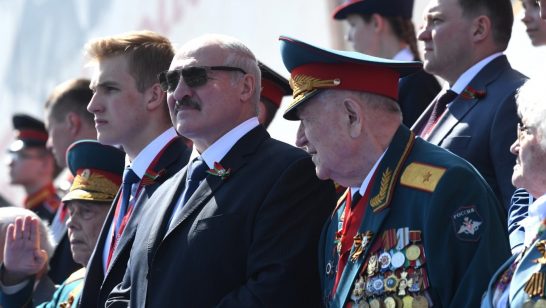
The Riga Summit takes place in the context of important changes in the political context of Eastern Europe. Progress in bilateral relations between the EU and Ukraine, Georgia and Moldova caused serious concerns of Russia, which tried to sabotage the process by the partition of Ukraine and appropriation of its territories – behaviour resembling the days of Ivan Grozny or Suleiman the Magnificent rather than the early 21st century. The recently announced reform of the European Neighbourhood Policy (ENP) can be seen as an attempt to eliminate the grounds for Russia’s nervousness. However, the EEAS and the Commission is trying to adapt this policy framework to new realties, specifically the fact that the countries of the EU neighbourhood have become markedly distinct from one another, in some cases with no chance of moving towards the same development path. The Riga summit is obviously still meant to soften the differences among the Eastern partners and show the indivisibility of the Eastern Partnership. But the summit will most likely expose the split between those who wish to be “Europeanized” and have EU membership and those who want to stay apart, but look for benefits from cooperation with the EU. After the Riga Summit more asymmetry in the EU’s attitudes towards the neighbours in the East is inevitable.
Introduction of the Eastern Partnership in May 2009 was obviously the most relevant development and notable improvement of the ENP format. The EaP provided the possibility to design more targeted policies towards the countries of Eastern Europe, which profoundly differ from the rest of the neighbourhood on historic, economic, political and geopolitical perspectives. The multilateral cooperation dimension was instituted as a tool to keep the Eastern partner countries together. The bilateral dimension offered the opportunity to start the association process separately with each partner country, employing an individual approach and a way to effectively apply the principle of “more for more”.
As three of the EaP countries have signed Association Agreements with the EU, while a further two have joined the recently created Russian driven Eurasian Economic Union (EEU), this has changed the context in the Eastern Partnership area. The EaP has become a format for hosting two participants of a competing economic project whilst membership in the EEU excludes the possibility of negotiating the AA (including DCFTA) with the EU. Azerbaijan has shown less interest for going ahead with the Association Agreement with the EU for two main reasons – the political criteria provided by the agreement and membership in the WTO as a condition for a preferential trade arrangement between the partners.
The new reality demonstrates the necessity to split the Eastern Partnership into two respective formats – one for the three associated countries, and the other for EaP countries with no real prospect of an association with the EU in the foreseeable future. This would divide the process into a two-speed approach and further encourage Ukraine, Moldova and Georgia to continue and deepen their reforms. Granted, such a split could discourage the remaining three states and may result in the EU losing its leverage to stimulate reforms and changes in Azerbaijan, Armenia and Belarus.
The situation does not call for any drastic changes in the existing bilateral dimension. Bilateral cooperation between the EU and EaP partner countries can be based on the existing institutional formats – PCAs, AAs, and other relevant agreements. The main target of our efforts should be the adaptation of the multilateral dimension of cooperation to the new conditions advised above.
It is important to keep the regional (geographical) criteria in designing the EU’s policy towards the neighbourhood, but the criteria should not overweight all other considerations related to the effective success of the Europeanization process. Therefore it is advisable to introduce a multiple criteria approach for designing efficient formats.
The first one is the geographical criterion. The EaP and the Mediterranean Union should remain core regional formats for multilateral cooperation. These formats may concentrate on the topics of regional cooperation, peace and security, human rights and rule of law, energy-transport infrastructure development, environment, culture, and education. But in the context of certain partners absenting from deeper integration with the EU, or refusal to implement respective reforms (Armenia, Belarus, Azerbaijan, some EuroMed countries), attempts to maintain a higher cooperation level artificially will not bring positive outcomes.
Secondly, the aspiration and ambition of a country may be a criterion used for forming a separate group of the ENP countries involving those who signed the AA/DCFTA (Georgia, Moldova, Ukraine) and those Mediterranean States which have free trade arrangements with EU in force and tend towards establishing effective human rights protection and rule of law in the country (Israel, Morocco, Jordan, Tunisia). The meetings and contacts within such a group can be facilitated at specially designed EaP/Mediterranean Panels or through Special Flagship Initiatives. The topics that can be discussed may vary from the deepening of trade and regulatory approximation, rules of origin cumulation, to security and other relevant issues. Thematic Panel discussions of such a group may be joined by Turkey and non-EU member Western Balkan States. Such a format will help to socialize the GMU countries with other closer partners of the EUs and help to integrate them into this wider Euro-Mediterranean area.
Thirdly, according to the criterion of the progress in regulatory convergence and democratic reforms some countries may be invited to the group described above, even though they do not show European aspiration or ambition to deepen economic integration with the EU, but have made sufficient progress in democratic and economic reforms, as well as in convergence with EU policies and regulations. This invitation may be extended to them following a recommendation from the European Commission or a pre-existing member of the group and supported by unanimous decision of other members. Indeed these countries may be invited to participate in the panel meetings on an ad-hoc basis.
Georgia, Moldova, and Ukraine, as countries satisfying all three criteria, shall also be allowed to form a separate group format with the EU. These meetings in the form of EaP(3+1) meetings can be dedicated to the specific issues of deepened cooperation, such as exchange of the experience on reform, synchronizing of regulatory policy reforms, or extending the cumulation of the rules of origin to all of them.
Based on the above-mentioned criteria, at least three formats of cooperation under the ENP can be created: one for the Eastern and Southern group (as they exist), without formal changes, but with lower ambition in pursuing the cooperation. The second one would provide a linkage between Euro-med and EaP formats, and include countries from the western Balkans. The third format would be a separate cooperation framework for the EU and the GMU countries.
This type of reform would keep “non-loyal” EaP countries interested to continue Europeanization in certain areas (where possible); promote wider cooperation between the most active countries from the European Neighbourhood in the south and the east; and give to the newly associated countries of Moldova, Ukraine, and Georgia a stimulus to continue their rapprochement with EU.
The opinions articulated above represent the views of the author(s), and do not necessarily reflect the position of the European Leadership Network or any of its members. The ELN’s aim is to encourage debates that will help develop Europe’s capacity to address the pressing foreign, defence, and security challenges of our time.



